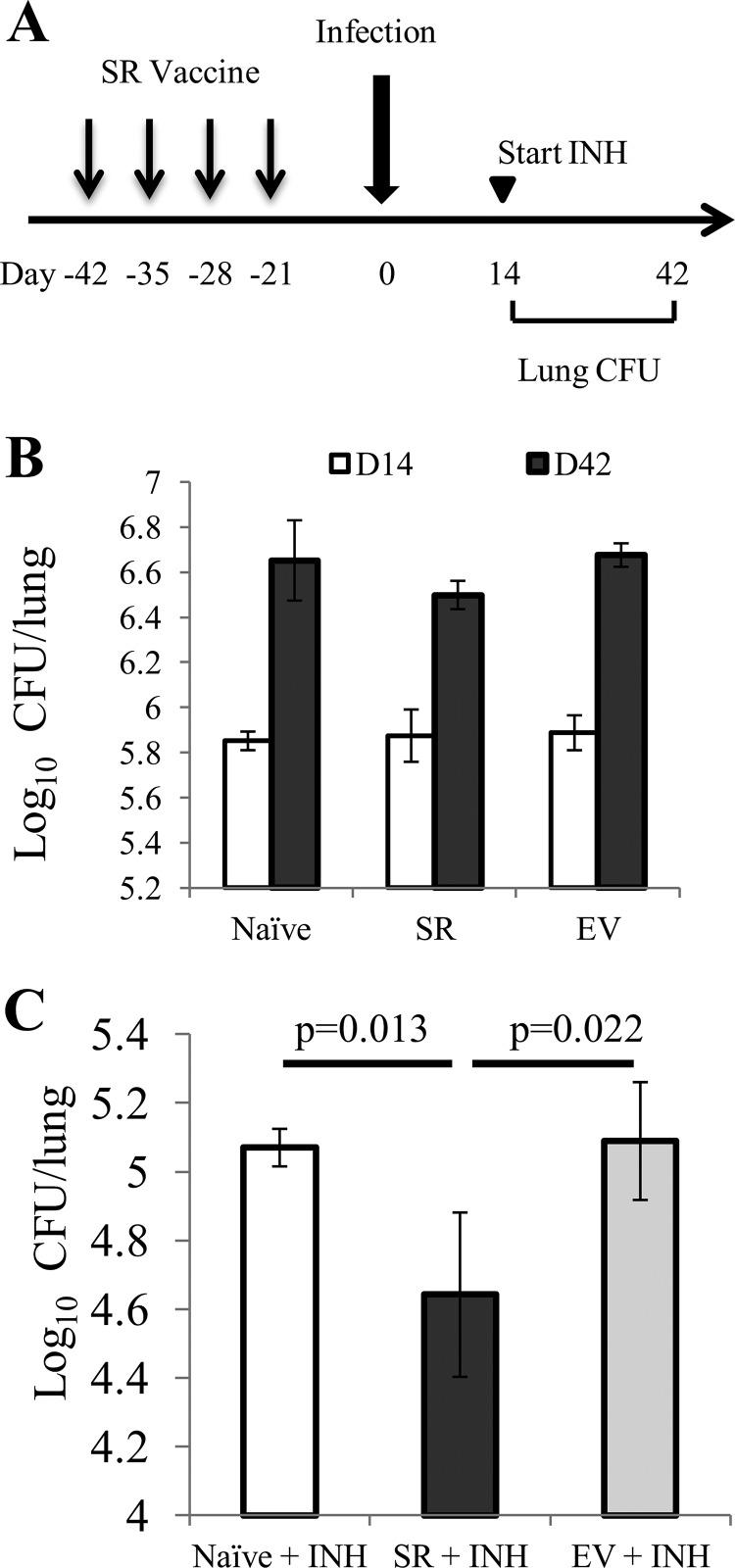FIG 6.
Immunity to key poly(P)-regulatory factors of the M. tuberculosis stringent response augments the bactericidal activity of isoniazid in mice. (A) Experimental scheme. C57BL/6J mice were vaccinated intramuscularly once weekly with the SR vaccine comprising four different DNA plasmids, each of which carried the relMtb, sigE, ppx1, or ppk2 gene, or with a sham vaccine (empty vector [EV]). A separate group of mice received no vaccination (naive). Three weeks later, all mice were aerosol infected with wild-type M. tuberculosis. Beginning on day 14 after aerosol infection, subgroups of mice in each group were treated orally with human-equivalent doses of isoniazid for 4 weeks. INH, isoniazid at 10 mg/kg by esophageal gavage once daily (5 days/week). (B) Lung bacillary burden (log10 number of CFU) on day 14 (D14) and day 42 (D42) following M. tuberculosis aerosol challenge of naive mice and those receiving SR vaccine or sham vaccine (empty vector). (C) Lung bacillary burden (log10 number of CFU) at day 42 of isoniazid treatment (n = 4 animals per data point).

